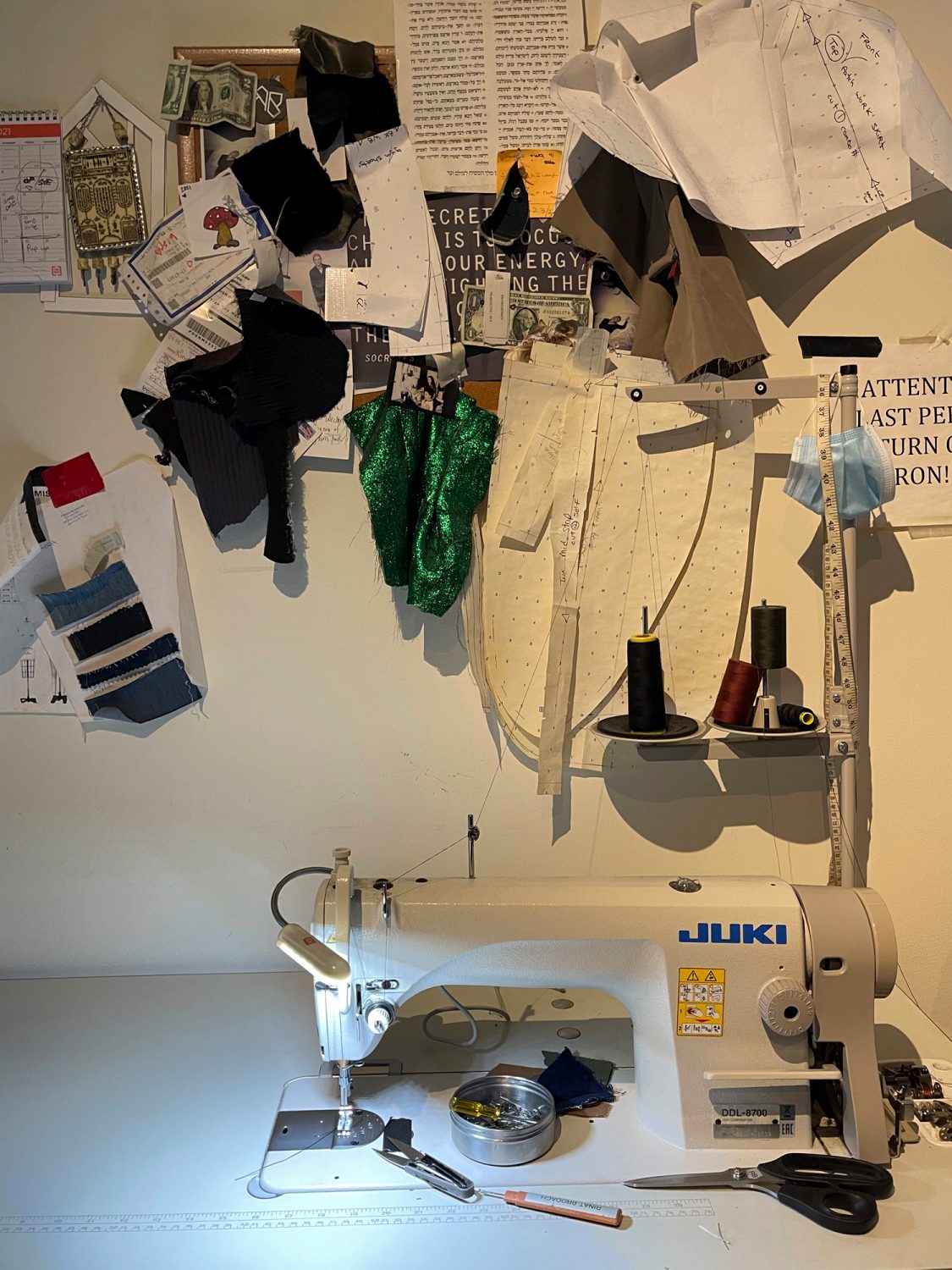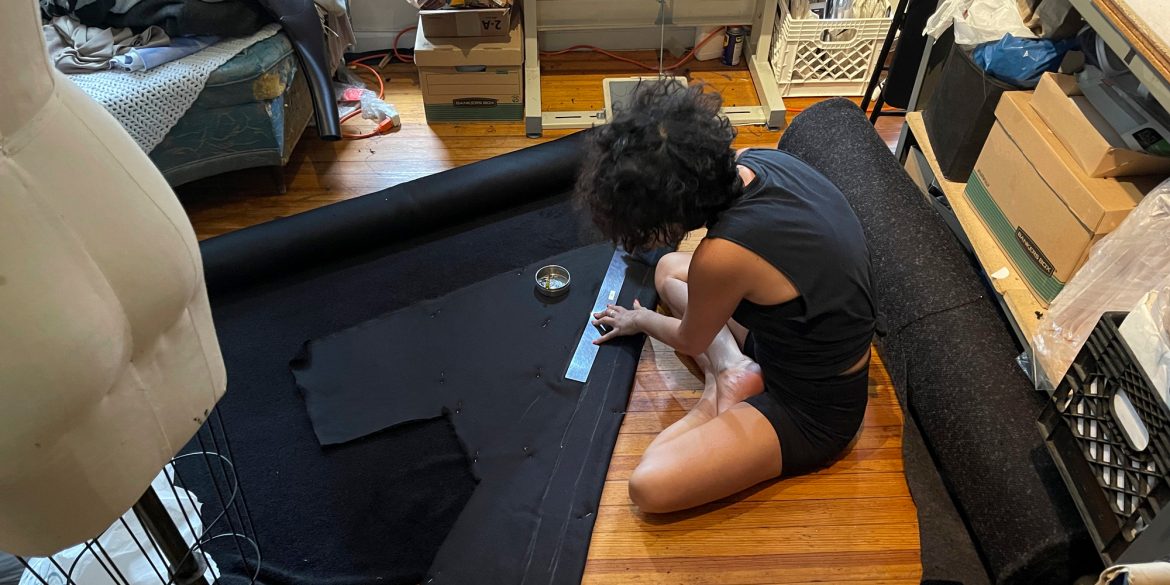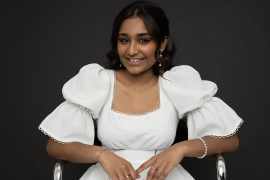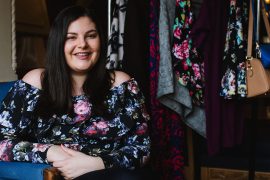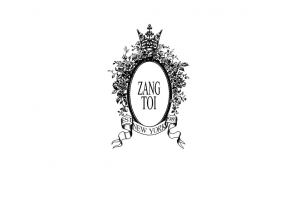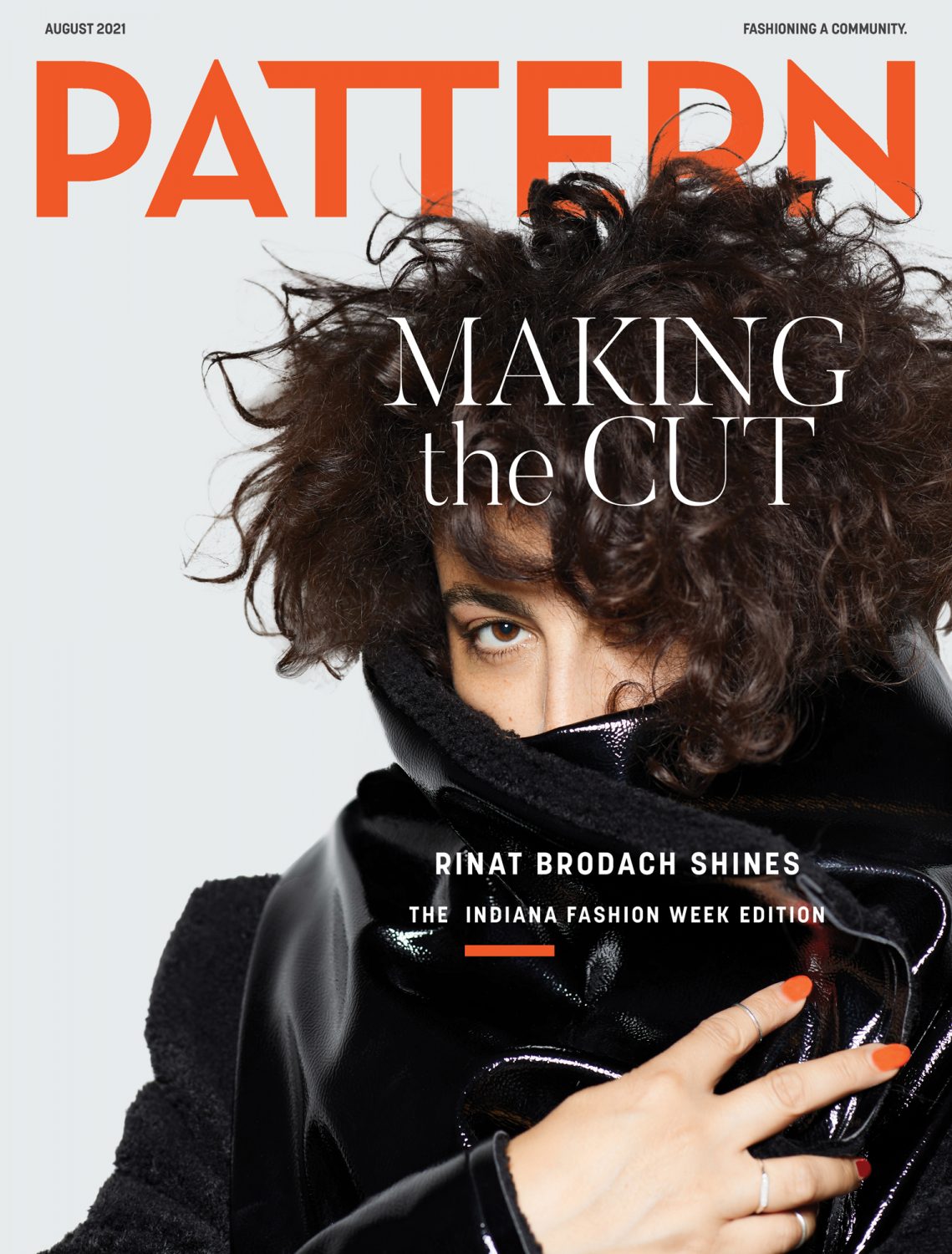
Photography credits:
Photography by Gene Tolan
Makeup up Jake Tribus
Models: Rinat Brodach, Ava Raiin, and John Atkinson
All clothing: Rinat Brodach
The first time Rinat Brodach was approached about being the featured fashion designer at Indiana Fashion Week, she had to decline the invitation. The Israeli-American artist is typically keen on mentoring emerging designers and expanding America’s fashion industry beyond its usual geographic boundaries. And participation in the 2019 event would have checked both boxes, but Brodach had a conflicting engagement—a big one, at that.
After starting her namesake women’s wear brand in 2014, and losing a significant investor just a few years later, Brodach caught a break in 2019: a successful audition for Making the Cut. Unfortunately, filming for Season 1 of the reality show overlapped with that year’s Indiana Fashion Week, making it impossible for her to do both. Brodach lasted through six episodes of the show and won the fifth, earning herself a coveted design collaboration with PUMA.
In 2021, Brodach was in a better position to say yes to Indiana Fashion Week, August 14-21. That brings her to Indianapolis, where she’ll mentor emerging fashion designers from the Midwest. As the event’s featured fashion designer, she will also judge a runway competition of their work and show her own designs on the final night.
In some ways, what Brodach has learned over the past two years makes her a better coach than she would have been in 2019. Not only has she launched a successful brand by climbing the industry’s traditional ladder; she has also gone off-script from conventional wisdom about what it takes to succeed in fashion.
Brodach was forced to regroup and innovate after losing financial backing for her women’s wear line. Heeding her own instincts, she pivoted to designing affordably-priced, gender-fluid clothing, sold direct to consumers from her website.
From then on, things started to click. Celebrities like Billy Porter and cast members from Orange Is the New Black began to show up on red carpets in her designs. Then came the successful audition for Making the Cut.
Her hard work and designs are getting noticed years after studying at the Academy of Art in San Francisco and The Chambre Syndicale de la Couture in Paris. The evolution is a proof point for Brodach’s philosophy of life: everything happens at the right time, in the right way.
“I don’t think it’s a race,” the designer says of her career. “I wish it would have happened earlier in life, but I learn best when I experience things. I went to a really great fashion school, but no school could have taught me business better than learning from my father, and from living life, and making it work.”
Brodach’s contrarian approach may be just the right inspiration at just the right time for Midwestern designers finding their way in—and around—the business of fashion.
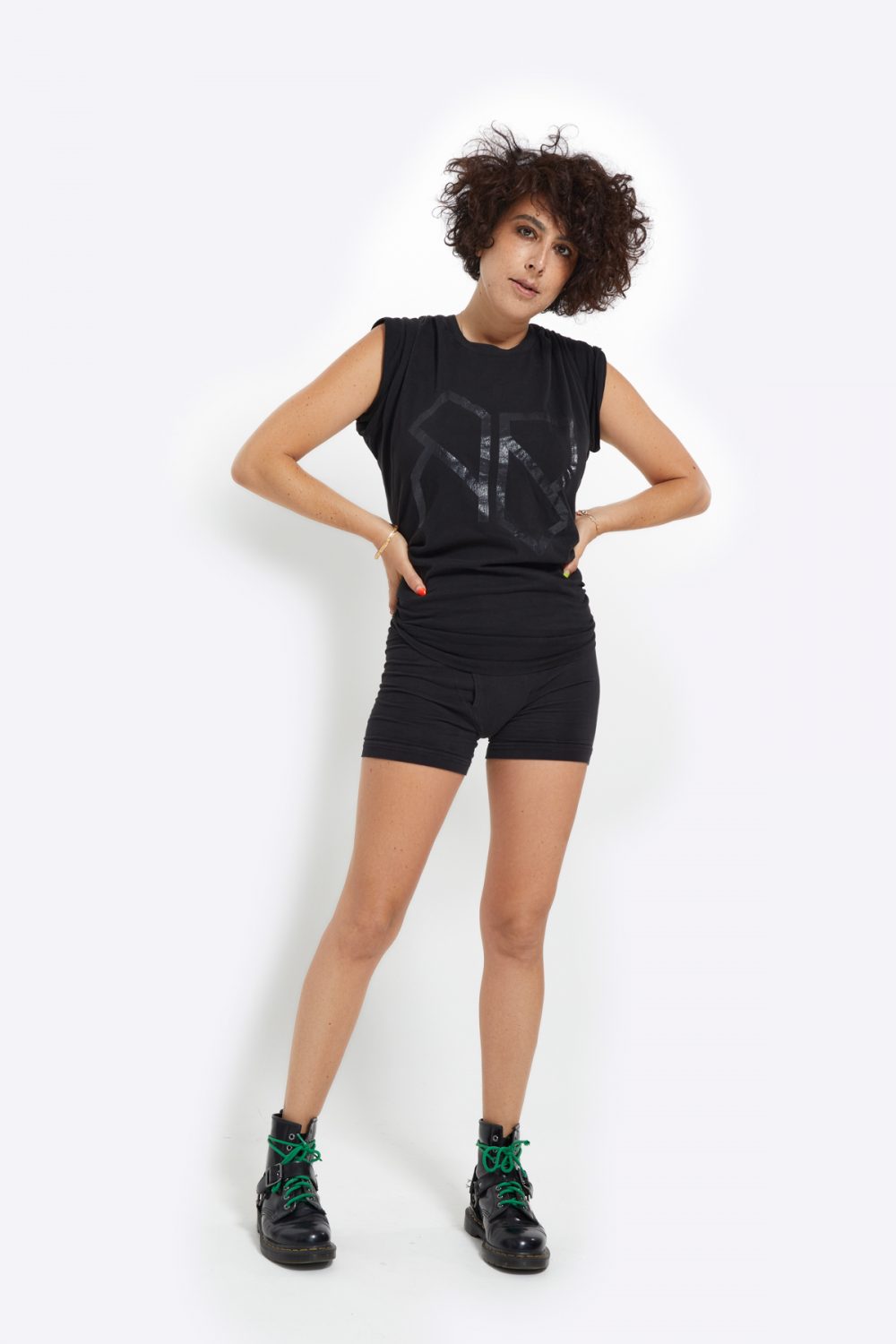
You’ve already met the fashion designers who are participating in this year’s Indiana Fashion Week. What did you emphasize in your conversations with them?
I had a raw conversation with them. I think a lot of people think that being a fashion designer is very glamorous. I want to give them the raw reality of what this life is about. It’s not just about followers on social media. It’s a lot of hard work and believing in yourself no matter what.
A lot of people let money stop them. People think, “I have a money problem. This is going to limit me.” I had to learn the hard way after losing funding and starting over from scratch. That meant working in bars and restaurants to make ends meet, keep the brand alive and change the business model.
What is the “raw reality” of the fashion business, in your opinion?
In my perfect world, I would love to sit and design and drape on a mannequin, but in reality, I may spend on 10 to 20 percent of my time designing a collection. The majority of my time is spent dealing with business stuff—how I’m going to market, PR, production, sourcing fabrics and creating content. You have to have your hands in every jar in order to have a sustained business. And you have to learn how to balance a creative life with business.
After appearing on Making the Cut and winning the chance to design with PUMA, what changed about the way you design and do business?
Before the launch of Season 1 of Making the Cut, we revamped everything to go direct to consumer. That’s when I started making accessible fashion. Being on Making the Cut reinforced the concept of making fashion for 99 percent of the world. I came away breaking down elements of my brand and applying them to everyday garments like my version of sweat pants, or my version of a body suit.
It’s been really great to be in direct touch with the customer. I think sometimes when you sell to stores, they don’t give you honest feedback, so to me, it feels great to build one-to-one relationships with people.
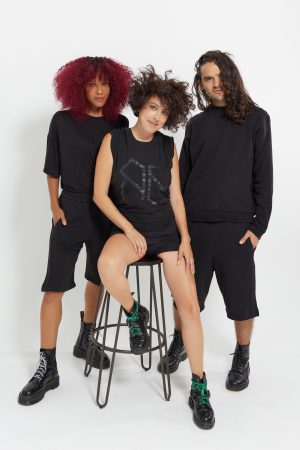
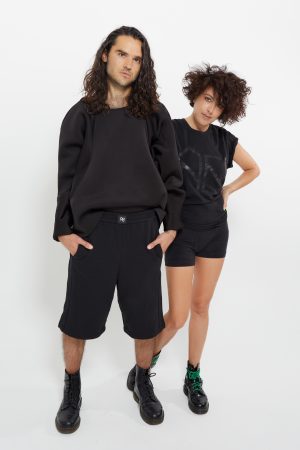
I love fashion, and I was thrilled to see that your clothes are reasonable for my budget. What’s your attitude toward affordability and pricing?
Affordability was a hot topic in my Zoom call with [Indiana Fashion Week] emerging designers. When I started my women’s wear brand, the price point was really high—like $800 retail for a coat. If I walk into a store, and I like a garment, but have no idea who the designer is, I’ll still buy it. But that’s probably because I’m a fashion designer. The average person won’t pay $800 for a brand they don’t know. They would rather take their grand and spend it on Chanel or another well-known brand.
Everybody deserves to feel that they are fashionable and to have a piece of fashion. Being gender free and reasonably priced, I’m giving everyone the opportunity to be fashionable and have a really well-designed, well-made piece. When you make something at a high price point, you are excluding many people who want to be a part of fashion. It’s really contrary to building relationships.
Is it possible that losing a major investor for your brand a few years ago was actually a blessing in disguise?
Yes, because it forced me to be uncomfortable. In order to grow, you need to be uncomfortable. You won’t grow if you stay in the same mindset and position. It took me a long time to understand that rejection is just redirection. It was the best school of my life. I’m proud of myself because it confirmed that I’m capable of doing anything I put my mind to.
I did what you’re supposed to do to climb up the fashion ladder, getting into showrooms, doing trade shows, having a publicist, doing New York Fashion Week. I got all these comments asking why I wasn’t in Barney’s or Saks, if my clothes were so amazing. It felt like a struggle.
I think people wanted to mold me the way they wanted to present me to the fashion world. At the time, I wasn’t able to speak. I felt very judged within the industry. It felt like there was always someone there to say, “You don’t have enough followers, or your sales are not acceptable for this residency or that incubator.” I felt it was all about politics.
Now, I do whatever feels right and what feels good to me whenever I’m designing and making. I don’t follow trends. The minute I started following my own drumbeat, the reaction from my surroundings was great.
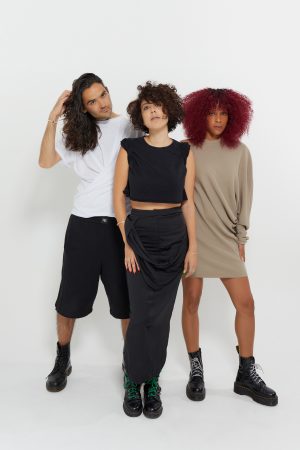
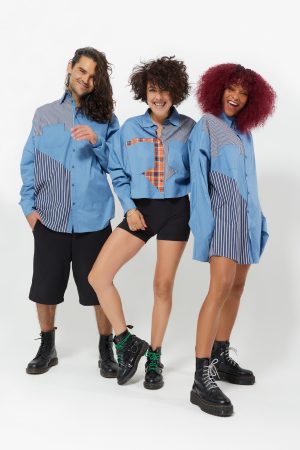
Is designing unisex clothes more difficult because of the multitude of body shapes?
I don’t think about it. I design what I would want to wear, or a friend of mine would want to wear. I drape and design in 3D—not just by drawing. What we are doing is taking basic garments from everyday life and giving a new twist with different draping techniques. Each garment has a different translation per wearer. We’re all individuals and our bodies are different.
One of my best sellers is a twist tee shirt. It’s a really good classic staple. I’ve had a great run with that. I get DMs and emails from people showing me pictures of themselves in my twist tee, and each person makes it what they want to make it. I like to wear mine in an extra-small, but I also have an extra-large because I like the oversize vibe on me.
Why should fashion be labeled? At the end of the day, a tee shirt is a tee shirt, whether it’s for a man, a woman, or a transgendered person. It’s all about how a person carries the self and the attitude they bring that makes the difference in the clothing. My goal is to create clothing that frees the wearer to be whoever they are.
What led you to become a fashion designer?
I was always attracted to art and drawing. When I was 13 or so, I was playing with fabric and noticing the way it lays on the body with different manipulations. It hit me that I wanted to be a fashion designer.
When I was 8, we moved to Israel, where military service is mandatory at age 18. I ended up going into the Israeli Air Force, and I was a meteorologist for two years. I saved a little money and went to San Francisco to school. When I was in my early 20s, I was visiting my grandmother in Florida. She was Holocaust survivor, and she told me that her dad, who was murdered by the Nazis, was the big tailor in the village where they lived.
When the Nazis came to their town, and collected all the Jews, and put them on the trains, my great-grandfather made each kid a garment with hidden pockets in shoulder pads to hide pictures, money, and jewelry in case they needed money to survive.
I was amazed by the story and the creativity of it. Ever since then, it’s felt as if I am continuing what my great grandfather didn’t finish. The fact that my grandmother survived and gave life to us is a winning stance. I’m here. I’m alive. It [design] was in my blood without knowing.
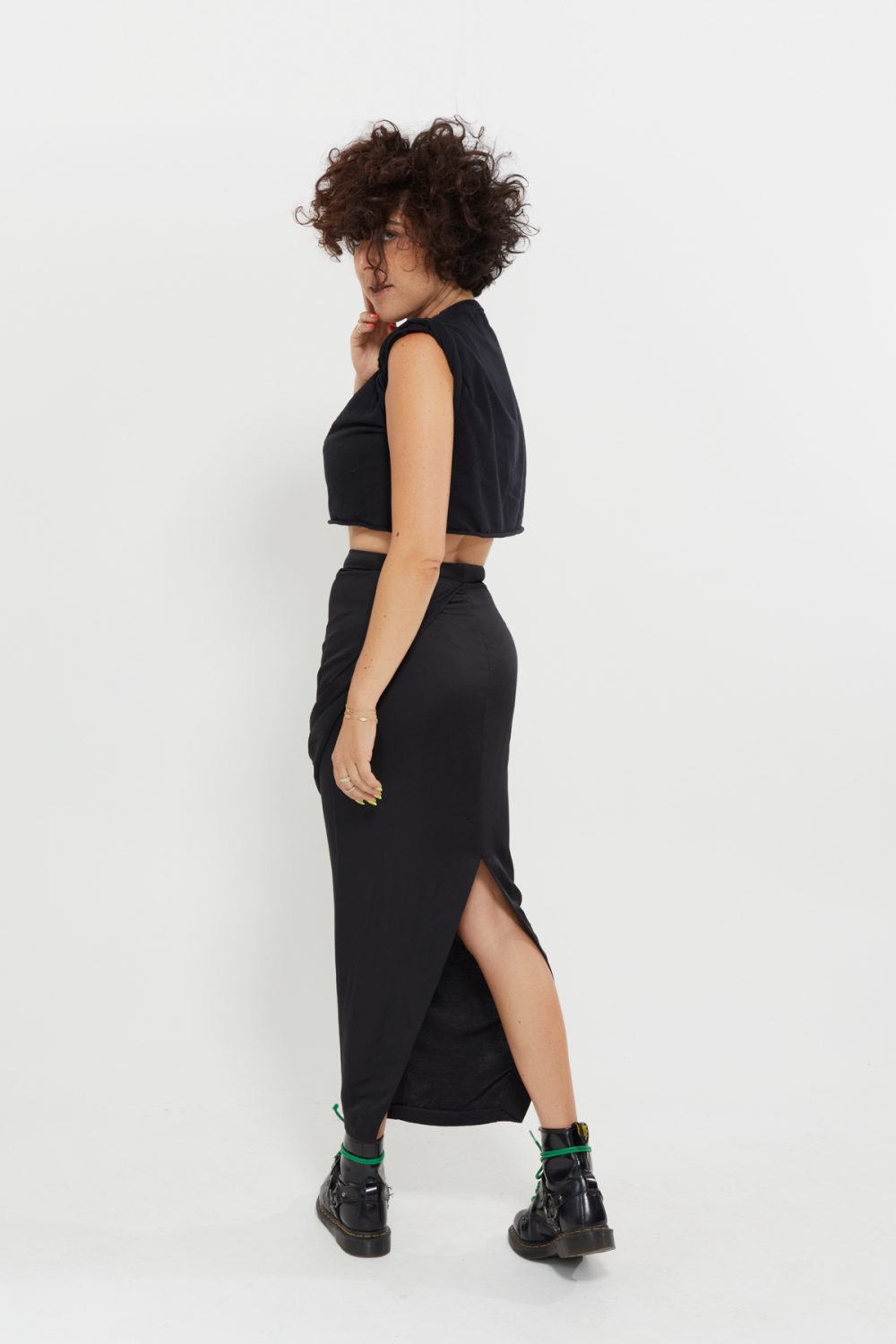
What obstacles have you faced that are common to designers, regardless of where they are in their careers?
I think the challenges are mental and financial. It’s not losing faith, getting up in the morning and doing things for myself, learning to be present and not let what’s happening in the outside world affect the things that I’m doing with design.
During the pandemic, we all got used to being online. Now, everyone is going out more, so I think it’s really important to keep working and not let your eyes go away from the prize.
I think money is a challenge, but I won’t dwell on money problems because that will only create more money problems. We all have self-doubt, and we all think that money is going to limit us, but I’ve learned that a lack of money never means that I can’t create.
As human beings, we all look at the other person’s grass, especially when they are doing better than we are. I think we have to remain in our lane, and this is a challenge for everyone.
What significance do you think Indiana Fashion Week has?
I think it’s uniting the fashion community and creating opportunities for designers. By giving local designers the same tools that designers in New York have, they [Indiana Fashion Week] are proving that you don’t have to be in Paris or New York. When you have a community of people helping each other and creating together, the sky is the limit. Designers are learning how to create their own market and understand marketing. The winner of the runway competition gets a nice money prize to go produce their line. It’s an amazing stepping stone for a young designer.
